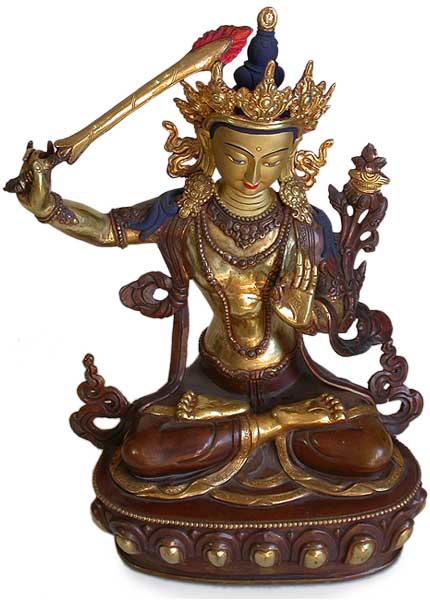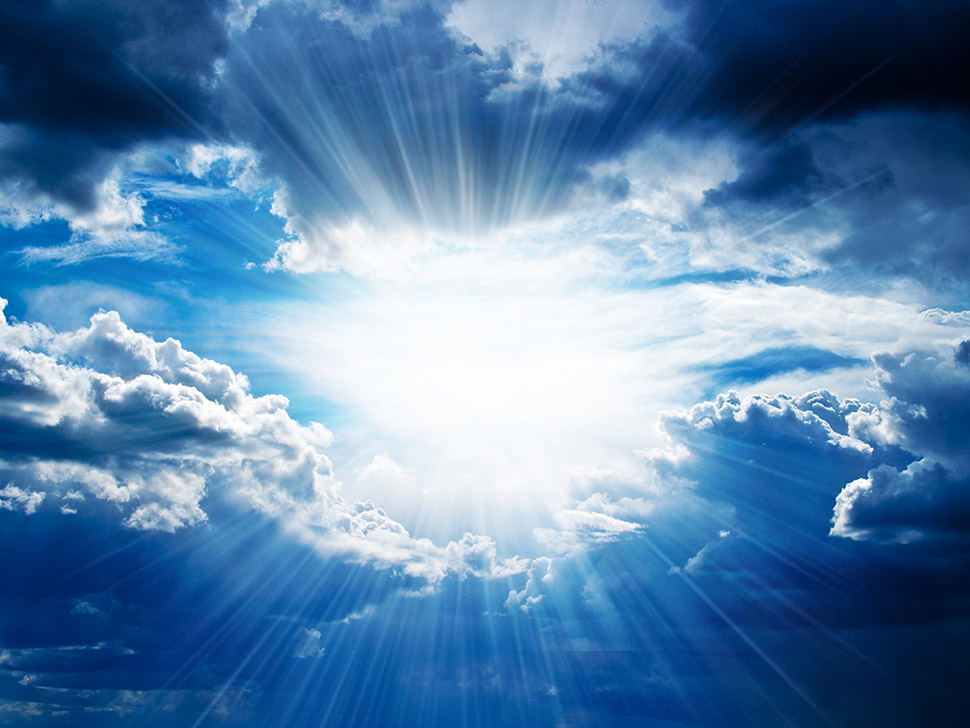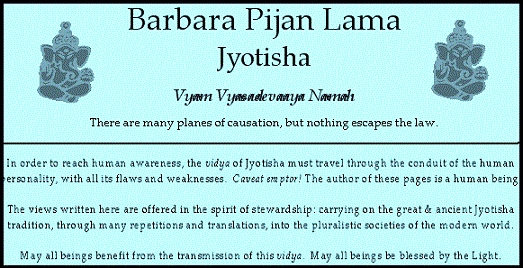Spiritual Figures, philosophical Guides, Higher Consciousness
"an increasing ability to serve is the only reliable sign of spiritual progress "
" There are two ways to look at life.
You can either believe that there are no miracles, or you can realize that everything is a miracle."
~~ Theory of Relativity 1879-1955 Albert Einstein

Manju-Shri
Nangpar Nangdze (Tib.) from www.buddhamuseum.com
14th Dalai Lama 1935- Policy of Kindness Tenzing Gyatso
The Path to Enlightenment,
page 62.
" We humans are actually not that far from enlightenment.
- Our five senses are like the Emanation Body of a Buddha
- our dream body, which is similar to the after-death form, is like a Buddha's Beatific Form
- and the basis of both of these is the subtle mind of clear light which shares the nature of a Buddha's Wisdom Body.
All we have to do is learn to transform these ordinary elements into their pure natures. Then buddhahood naturally comes into our hands."
" The most incisive discriminator of practice is not doctrine, but lifestyle."
-
Faust
was Ihr den Geist der Zeiten heist,
Das ist im Grund der Herren eigner Geist
In dem die Zeiten sich bespiegeln.
Be Here Now 1931-2019 Baba Ram Dass
-
One Liners
" Treat everyone you meet like God in drag."
Entering spiritual partnership with planetary deities
Saintly Charts which exemplify the delivery of religious instruction and/or sensitive listening to spiritual guidance from sources
Institutionally Ordained Title-holders
- Ordination may be official, avowed, hierarchy-approved, honorary, or self-proclaimed
-
Summa Theologica 1225-1274 St. Thomas Aquinas * Scholastic theologian, ecclesiastic (speculative nativity)
-
Protestant Reformation 1483-1549 hymns * Katharine and Martin Luther * Protesting Christian * theologian, ecclesiastic
-
Institutes 1509-1564 theology John Calvin * Protesting Christian theologian, attorney, author
-
Methodism 1703-1791 preacher John Wesley * revivalist evangelist * Christian theologian, ecclesiastic
-
Mormon Church 1805-1844 Golden Plates Joseph Smith * clairsentient founder
-
Raja Yoga 1863-1902 Swami Vivekananda * missionary of Advaita Vedanta
-
Holy Science 1855-1936 Shri Yukteswara Giri * teacher of Autobiography of a Yogi 1893-1952 Swami Yogananda
-
Autobiography of a Yogi 1893-1952 Swami Yogananda * spiritual teacher, organizational genius, saint
-
Opus Dei 1902-1975 Santo Josemaria Escriva de Balaguer * guiding visionary of Opus Dei wealth ministry
-
Yogaville 1914-2002 Swami Satchidananda * master teacher, Integral Yoga lifestyle program
-
52nd Dai of Dawoodi Bohra 1915-2014 Syedna Mohammed Burhanuddin
-
" Seven Storey Mountain" 1915-1968 Thomas Merton
-
Way of Zen 1915-1973 Alan Watts * Anglican-Taoist priest
-
TM 1917-2008 Maharishi Mahesh Yogi
-
Hour of Decision 1918-2018 Rev. Billy Graham * businessman, christian televangelist
-
Unification Church 1920-2012 Rev. Sun Myung Moon * businessman, international organizer
-
Pope-264 John-Paul-II 1920-2005 Karol Wojtyla * theologian, ecclesiastic
-
USA Black Power 1925-1965 Nation of Islam Malcolm X * preacher, social justice activist
-
Old Path White Clouds 1926-2022 Interbeing Thich Nhat Hanh * Buddhist monk, peace activist
-
Puttarpathy 1926-2011 Sathya Sai Baba * self-proclaimed reincarnation of revered regional saint
-
USA Civil Rights 1929-1968 Rev. Martin Luther King * Christian pastor, theologian, social justice activist
-
God's Dream 1931-1921 Anglican Archbishop Desmond Mpilo Tutu * social justice activist, ecclesiastic
-
Moral Majority 1933-2007 Rev. Jerry Falwell * businessman, political activist, televangelist
-
14th Dalai Lama 1935- Policy of Kindness Tenzing Gyatso * worldwide philosophical figure
-
Pope-266 Francis 1936- Jorge Bergoglio * theologian, ecclesiastic
-
49th Nizari Ismaili Imam 1936- Agha Khan-4 Karim al-Husseini * dynastic inherited entitlement
-
Clairsentient 1939-1994 social justice Paul Solomon
-
Archbishop of Canterbury 1950- poet Rowan Williams * Anglican theologian, ecclesiastic, served 2002-2012
-
Miracle Roses 1207-1231 St. Elizabeth of Hungary
-
Dialogue 1347-1380 St. Catherine of Siena
-
La Pucelle d'Orleans 1412-1431 St. Jeanne d'Arc
-
El Castilo Interior 1515-1582 St. Teresa de Avila
-
Miraculous Medal 1806-1876 St. Catherine Laboure de Paris
-
Aquero 1844-1879 St. Bernadette of Lourdes
-
Le Petite Voie 1873-1897 St. Therese von Lisieux
-
Total Surrender 1910-1997 Mother Teresa of Kolkata
-
Violet Flame 1939-2009 Elizabeth Clare Prophet
-
Law of One 1943-2015 Ra Material Carla Rueckert
-
Hugging Saint 1953- Ammachi of Kerala
Writers , speakers, and organizers
Religious, philosophical, inspirational mediation, reflection, spiritualized topics, sacred teachings
-
Cogito-Ergo-Sum 1596-1650 logic Rene Descartes
-
Ethica ordine geometrico 1632-1677 Baruch Spinoza
-
Categorical Imperative 1724-1804 Immanuel Kant
-
Faust 1749-1832 Johannes Wolfgang von Goethe * metaphysical metaethical writings
-
Gitanjali 1861-1941 polymath Rabindranath Tagore-Thakur * reflective philosophical poet, literary celebration of ethnic traditions
-
Knowledge of Higher Worlds 1861-1925 Rudolf Steiner * Anthroposophy
-
Satygraha 1869-1948 Mahatma Mohandas Gandhi * India-Africa civil rights champion
-
Savitri 1872-1950 revolutionary poet Shri Aurobindo
-
Memories Dreams Reflections 1875-1961 Carl Jung
-
Duino Elegies 1875-1926 mystical poet Rainer Maria Rilke * poet of psychic exploration
-
Earth Changes 1877-1945 Edgar Cayce - clairaudient healer
-
Steppenwolf 1877-1962 anti-Nazi Hermann Hesse * novelist, essayist
-
Navamani Malai 1879-1950 Bhagavan Shri Ramana Maharishi of Arunachala
-
The Mirror 1895-1986 theosophy Jiddu Krishnamurti - theosophy icon
-
Old Path White Clouds 1926-2022 Interbeing Thich Nhat Hanh
-
Tantra 1931-1990 professor Osho Rajneesh - clairaudient philosopher
-
Be Here Now 1931- Baba Ram Dass
-
Super Brain 1946- Dr. Deepak Chopra
-
A New Earth 1948- philosopher Eckhart Tolle - clairaudient reader-healer
-
Church of Christ-Scientist 1821-1910 Mary Baker Eddy - clairaudient healer
-
Secret Doctrine 1831-1891 Theosophy Helena Hahn Blavatsky * clairaudient reader
-
Telepathy and the Etheric Vehicle 1880-1949 Alice Bailey - clairaudient reader
-
Foursquare Evangelist 1890-1944 Aimee Semple McPherson - charismatic Christian evangelist and faith-healer
-
Violet Flame 1939-2009 Elizabeth Clare Prophet - clairaudient reader
-
Law of One 1943-2015 Ra Material Carla Rueckert - clairaudient reader
"an increasing ability to serve is the only reliable sign of spiritual progress."
-- Lao Tzr
To the mind that is still, the whole universe surrenders.
~~ Be Here Now 1931- Baba Ram Dass
" The spiritual journey is individual, highly personal.
It can' t be organized or regulated.
It isn' t true that everybody should follow one path.
Listen to your own truth."
~~The Mirror 1895-1986 theosophy Jiddu Krishnamurti
" You may remember the story of how the devil and a friend of his were walking down the street,
when they saw ahead of them a man stoop down and pick up something from the ground, look at it, and put it away in his pocket.
The friend said to the devil, "What did that man pick up?"
" He picked up a piece of the truth," said the devil.
" That is a very bad business for you, then," said his friend.
" Oh, not at all," the devil replied."I am going to help him organize it." "
~~ Su-k'ung T'u * CE 837-908
Bend down and there it is:
No need to wrest it from others.
With the Way in complete agreement,
The mere touch of a hand is spring:
The way we come upon blooming flowers,
The way we see the year renew itself.
What comes this way will stay
What is gotten by force will drain away.
A secluded person on an empty mountain,
While rain falls, picks some blades of duckweed.
Freely feeling the flash of dawn:
Leisurely, within the celestial balance.

Temple in Vietnam
Guru's public religion = 9 Guru's private religion = 12
'Bhaga' = fortune . ('Bhagya' is the adjective form of bhaga.)
-
tanu [1st], putra [5th], and dharma [9th] are primary significators of positive karma or merit built up in parallel lives .
When these three Trikona bhava [triangle] = all favorable, aperson has some rewarding experiences in life and they also gratefully appreciate those experiences.
Less tendency to feel victimized, and therefore to compensate for one's victim state by lying, cheating, stealing. Trinal strength contributes a general upgrade to awareness, appreciation, and access to pleasures. (Yes, they are all free.)
Suraja the significator of the soul must be well-established in order for a saint to become a spiritual role-model, leader, teacher, and dharma icon.
-
Savitri 1872-1950 revolutionary poet Shri Aurobindo= Surya + Shukra + Budha all in Simha-3 writing, instructional materials, small-group discussions
Goddess worshippers, healers, and those committed to compassionate action for the benefit of humankind need a good Moon. Chandra-10 indicates high public recognition in a leadership role, due to a comfortable customary visage " familiar face" .
Satyagraha 1869-1948 Mahatma Mohandas Gandhi's Chandra-Rahu yoga in Karkata-familiarity is exceptionally powerful in doctrinal, ideological dharmasthāna-9
A strong Jupiter in rashi and navamsha, in svabhava, mūlatrikoṇa , exalted, [nīcha-bhanga] , or in kendra or trine, is also required for access to moral and spiritual knowledge base developed in scholarship in parallel lives .
Saturn should be strong enough to provide self-discipline and service commitment but not so harsh as to be emotionally crippling. In the hand, Saturn finger (next to index finger and usually the longest finger on the hand) must be strong and stable with a well-formed fingernail. The promising Saturn Fingers are frequently seen in the classic "philosopher's hand" with pronounced knuckles.
tantric saints need major Rahu-Ketu energy in both rashi and navamsha.
Weakened Shukra
Usually, Shukra who rules Material and Sensual pleasures cannot be too strong in the nativity of a saint or spiritually proactive person.
Professor Bright Beautiful Bhrigu typically emphasizes sensual pleasures of human-to-human partnership, which may significantly distract one's attention from the project of developing from the human-to-divine partnership which defines the spiritual path.
Sense-pleasuring Shukra and philosophical, theoretical Guru are planetary enemies.
-
In beneficial Jyotisha juxtapositions, Guru can direct Shukra's artistic enjoyment of visual and auditory beauties into a channel of religious art and song that can provide hopeful guidance for millions.
-
Also, on a personal-physical level, some tantric traditions do offer a technology for manipulating sensual experience toward ultimate increase of spiritual awareness. These traditions can support the spiritual development.
-
Still, aweakened - often [nīcha] Shukra is very common in spiritual charts.
The environment in Professor Angarika's classroom can be weak or strong
Mercury tends to be strong for spiritual guides who use words (preaching, writing) but guidance is primarily a task of Guru therefore Budha-words are not always needed.
Vimshamsha * D-20
If the radix and navamsha are both spiritually strong, and the birth time is accurate, check the Vimshamsha = D-20 * 20th divisional varga * for c ert spiritual development.
Remember the sign occupied by the bhukti-pati"wakes up" that same rashi in all the varga charts.
Siddhamsha * D-24
Extraordinary spiritual powers or"siddhas " emerge in the D-24 or siddhamsha. Siddhamsha reveals academic, philosophical, and other psycho-mental accomplishments in conventional conceptual thinking as well as the more esoteric range of Tantric accomplishments associated with mystical traditions worldwide.
Spiritual figures whose powers involve visible or invisble siddha may show a strong and auspicious Siddhamsha with key radix bhagya lords - lagnesha-1 +Vidyapthi-5+dharmesha-9 - operating at high levels in the 24th articulation.
Spiritual Truth of Gem Remedies- Superstition and Idolatry fail (Letter to a client)
Commentary on Vedic-style gem remedies = Remedial Ratna page.
About where the real divine energy is: entering spiritual partnership with planetary deities
(Letter to a client) IMHO, the source or seed energy is in the deities. Shani [Saturn] is a godhead. The heavy" old ball of gas" Shani is a mirror reflection, or microcosmic image, of god-Shani.
The Muladhara chakra in each human body is an image of the deity Shani. Each item in Shani' s portfolio = time, work, akashic-memory pattern, structure, bones, discipline, et-cetera. = are tiny reproductions of this godhead. There are seven major deities ruling Earth Plane and so seven planets and seven chakras [and seven sacraments and seven times marching around Jericho brought the walls tumbling down!]
But because each of the" holographic" images is a perfect copy of Shani, we can justly say that Shani is a reflection of our muladhara chakras. Because if we did not have a muladhara chakra we would not know anything about Shani and Therefore, shani would not exist.
For some folks it is more empowering to believe the intelligence" originates " with the deities (Perspective A).
For others exactly the opposite belief gives more mental freedom. They prefer the belief that the power" originates " in human consciousness (Perspective B) and is projected onto the deities.
When folks need relief from oppressive human responsibilities, isuggest perspective A.
When they are superstitious and disempowered, isuggest Perspective B.
As any star-trek junkie knows, due to the nature of holographs, both perspectives will yield the same view.
I swing between them based on my spiritual needs at the time.
Hope this is helpful and/or amusing :)
Hello,
I was just going through your site,
and I read about Paramhansa Yoganadaji. I
understand that its meant to convey that my Guru could realize that God iz
everything so we needn't depend on this changing world for nethin for in God we
find infinite love and then we need nothing more..and that really is the truth.
But somehow I found the words intensely erotic relationship with the
ishtadevata goddess disturbing.. you are a person of great knowledge and i know
u must be full of praise for Yoganandaji ..but somehow i dont find this phrase
apposite.. i m not trying to blame you or something..i respect you for u r a
person of great knowledge...just dat m writing what i felt i shud
Namaste
Every saint has a consciously and intensely loving (erotic) relationship with the inner deity * ishta-devata, god of one's heart.
The Greek word 'eros' means 'love-arousal'. 'Erotic' in modern English connotes the most deep and passionate interactions between lovers.
The word 'saint' means 'clean person'. (holy)
The word 'love' in English originally meant 'fame, getting attention' and 'love' has now come to represent 'passionate attraction' * akarshana * (Mangala-Shukra).
All human beings have love relationships. (All are born with some placement of Shukra. All are born with some conditions of yuvati bhava.)
If one can read the diaries of holy persons such as Saint Catherine of Sienna or Saint Francis of Assisi, or accounts of the songs and talks of Paramahamsa Ramakrishna of Bengal, it will become clear that the more pure the heart of the saint, the more erotic their relationship with the Divine.
If you are quite young (likely you are) it's possible that your understanding of the scope of 'erotic' energy is not yet fully developed. Of course, love energy does have a physical expression - but that is only the simplest and most obvious form.
'Erotic' energy is a force of nature which - when properly understood - becomes the fuel for brilliant spiritual transformation.
Wishing you continued success in Jyotisha studies,
Sincerely, barbara Pijan Lama, Jyotishavidya
QUOTATION from Tenzing Gyatso,
-
The Dalai Lama's Book of Love and Compassion
" Let me explain what I mean by compassion.
-
Usually, our concept of compassion or love refers to the feeling of closeness we have with our friends and loved ones.
-
Sometimes compassion also carries a sense of pity.
This is wrong.
-
Any love or compassion which entails looking down on the other is not genuine compassion.
To be genuine, compassion must be based on respect for the other, and on the realization that others have the right to be happy and overcome suffering just as much as you.
-
On this basis, since you can see that others are suffering, you develop a genuine sense of concern for them."
Our Childish Nature
QUOTATION from
Tenzing Gyatso.
Healing Anger : The Power of Patience from a Buddhist Perspective.
" So from the Buddhist viewpoint, in our daily life we are sometimes too sensitive toward minor things.
-
At the same time, toward other major problems that can create long-term consequences, we are not so sensitive.
Because of this, we find in the scriptures that ordinary people like ourselves are described as childlike or childish.
-
In fact, the term jhi-pa (Tib. 'byis pa'), or childish, is used in different ways: sometimes it is used in terms of age, which is the conventional usage sometimes it is used for ordinary sentient beings, as opposed to the Arya beings, the superior beings.
Then sometimes it is used to describe people who are concerned only with affairs of this life and have no interest or regard for the affairs of their future life, or life after death.
So, the tendency of our childish nature is to take small things too seriously and get easily offended,
-
whereas when we are confronted with situations which have long-term consequences , we tend to take things less seriously."
Clear conscience is usually the sign of poor memory.
QUOTATION from
Swami Beyondananda
If you're looking to find the key to the Universe, ihave some bad news and some good news.
The bad news is: there is no key to the Universe.
The good news is: it has been left unlocked.
Dalai Lama commenting on the role of the Guru
QUOTATION from Tenzing Gyatso . (2001).
-
Answers: Discussions with Western Buddhists. (2001). Jose Ignacio Cabezon (Ed.)
"I have made the point in the past that it is not necessary to consider someone one's guru from the very outset simply because one has heard the explanation of the Buddha's teachings from that person.
At first, it is much better if one does not have that kind of attitude toward them, simply regarding them as a Dharma-friend. One gets teachings, and time goes by.
-
Then, when one feels that one knows that person quite well, and can take them as one's guru without any danger of transgressing the commitments that accompany such a relationship, when one has that kind of confidence , then one can go ahead and take him or her as one's guru.
The Lord Buddha himself made it quite clear in both the Vinaya sutras and in the Mahayana scriptures, and even in the Tantrayana, in a very detailed fashion, what the qualities of a teacher should ber.
This is why I often criticize the Tibetan attitude of seeing whatever the guru does as good, of respecting everything that the guru does right from the start without the initial period of examination .
-
of course, if the guru is really qualified , then to have such an attitude is very worthwhile.
Take the cases of Naropa and Marpa, for example. Sometimes it appears as though some of the things Tilopa asked of Naropa, or Naropa of Marpa, were unreasonable. Deep down, however, these requests had great meaning.
-
Because of their great faith in their gurus, naaropa and Marpa did as instructed.
-
Despite the fact that they appeared to be unreasonable, because the teachers were qualified, their actions had some meaning.
-
In such situations, it is necessary that from the disciple's side all of the actions of the teacher be respected.
-
But this cannot be compared to the case of ordinary people.
Broadly speaking, ifeel that the Buddha gave us complete freedom of choice to thoroughly examine the person who is to be our guru.
This is very important. Unless one is definite, one should not take them as a guru. This preliminary examination is a kind of precautionary measure."
Individual Suitability of Religion
QUOTATION from Tenzing Gyatso.
-
(2001). Answers: Discussions with Western Buddhists by the Dalai Lama. Jose Ignacio Cabezon (Ed.)
" I generally believe that every major religion has the potential for giving any human being good advice
there is no question that this is so.
-
But we must always keep in mind that different individuals have different mental predispositions.
This means that for some individuals one religious system or philosophy will be more suitable than another.
-
The only way one can come to a proper conclusion as to what is most suitable for Oneself is through comparative study .
-
Hence, we look and study, and we find a teaching that is most suitable to our own taste ."
QUOTATION from Andrew Harvey, author-translator of the Tibetan Book of Living and Dying
" In the New Age a lot of people airily talk about being a divine being, but what would it actually mean to be a divine being?
I think the Buddha and Krishna and other great masters have shown just how much it actually costs, because to be a divine human being is to live a life of abandoned passionate love of all things to its absolute fullest at the core of reality.
-
That is what it means.
- That is what it costs.
- That is the only way in which it could mean anything.
Otherwise, we're just playing with words and cheering ourselves up and that is not going to preserve humanity at this dangerous moment. I think what we have to do now is to take the challenge of the very greatest saints and mystics and really Christ ourselves, if you like. Instead of endlessly appealing to their force to save us we have to do the work that they came to open up to us...r.
I think the New Age has to grow up and take that challenge really more seriously and rigorously and passionately than it has begun to yet. We are going to have to have an authentic mystical renaissance instead of a lot of people dancing about and pretending to have mystical experiences, which is what's going on at the moment.
-
It's a tragic situation in some ways.
On the one hand you have the corporations and the industrial network destroying the planet and on the other hand you have a largely fake spiritual renaissance going on falsely empowering people with half-baked notions of divine identity, instead of bringing people into the full challenge and majesty, glory and power and authentic divine identity.
-
So, on both sides you are met with different illusions .
-
It's very important now.
It's never been more important to have the authentic mystical path out there in its full beauty and full rigor."
Changing Religions: Be Careful!
QUOTATION from Tenzing Gyatso,
-
Healing Anger: The Power of Patience from a Buddhist Perspective . Geshe Thupten Jinpa (Trans.)
" If you hurriedly change your religion , then after some time you may find some difficulties and some confusion.
-
Therefore, be very careful .
An important thing to remember is that once you change your personal religion, there is a natural tendency, in order to justify your newly adopted religion, to take a critical view toward your previous religion.
This is very dangerous.
-
Although your previous religion may be unsuitable or ineffective for you, at the same time, millions of people may still get benefit from that tradition.
-
So we must respect each other's individual rights.
If it is their belief, and millions of people get their inspiration from it, we must respect that.
And there are many reasons to do that."
POTUS-37 Watergate 1913-1994 Richard Nixon
-
In the Arena, 1990, p. 91
" I believe children should be allowed to have a moment of silence in schools.
But I do not believe an amendment allowing school prayer belongs in the Constitution.
America has become a great nation in large part because we are conceived and nurtured in strong religious faith.
But the real test of faith is whether it is strong enough to tolerate other faiths."
" The government ought to stay out of the prayer business."
~~ POTUS-39 Talking Peace 1924- Jimmy Carter , press conference, washington, d.C., 1979
QUOTATION
POTUS-41 All the Best 1924-2018 George H.W. Bush
-
Remarks at the Annual National Prayer Breakfast, 01-Feb-1990
" The values that spring from our faith certainly tell us a lot about our country.
And consider that for more than two centuries Americans have endorsed, and properly so, the separation of church and state.
But we've also shown how both religion and government can strengthen a society.
-
After all, our Founding Fathers' documents begin with these words:
-
"All men are endowed by their Creator with certain unalienable rights."
And Americans are religious people, but a truly religious nation is a tolerant nation.
We cherish dissent, we cherish the fact that we have many, many faiths, and we protect even the right to disbelieve."
QUOTATION from Answers: Discussions with Western Buddhists, p12-13, by H.H. Tenzin Gyatso, 14th Dalai Lama
" If we view the world's religions from the widest possible viewpoint and examine their ultimate goal, we find that all of the major world religions, whether Christianity or Islam, Hinduism or Buddhism, are dedicated to the achievement of permanent human happiness.
They are all directed toward that goal.
All religions emphasize the fact that the true follower must be honest and gentle in other words, that a truly religious person must always strive to be a better human being.
To this end, the different world religions teach different doctrines which will help transform the person.
In this regard, all religions are the same, there is no conflict.
This is something we must emphasize.
We must consider the question of religious diversity from this viewpoint.
And when we do, we find no conflict."
Intimacy with the Object of Study
QUOTATION from Dalai Lama
-
Kindness, clarity, and Insight 25th Anniversary Edition
-
Jeffrey Hopkins (Trans. and Ed.), Elizabeth Napper (Ed.)
" When engaging in hearing, it is important to mix the mind, to familiarize the mind, with what is being heard. The study of religion is not like learning about history.
It must be mixed with your mental continuum your mind should be suffused with it.
-
A sutra says that the practices are like a mirror your actions of body, speech, and mind are like a face to be seen in the mirror
-
and through the practices you should recognize faults and gradually get rid of them.
As it is said in the oral transmission, "If there is enough space between yourself and the practices for someone else to walk through, then you are not implementing them properly."
Seeking Refuge in an External Source
QUOTATION from
Tenzing Gyatso.
Lighting the Way.
Geshe Thupten Jinpa (Trans.).
" Now, as [in the past], the concept of a transcendent god as creator has a powerful and inspiring impact on the lives of those who believe in it.
The sense that their entire destiny lies in the hands of an all-powerful, omniscient and compassionate being leads them to try to understand the workings and key message of this transcendent being.
-
Then, when they come to realise that this transcendent being embodies love and infinite compassion, they try to cultivate love and compassion towards their fellow beings as the qualities through which to express love for their creator.
-
They also gain confidence and inspiration through a sense of intimacy or connectedness to this loving, transcendent being.
Although, metaphysically speaking, buddhists reject any notion of a transcendent creator or god, some individual Buddhists do relate to certain higher beings, such as the goddess Tara, as an independent and real being with power over their destiny.
For these practitioners Tara is their sole refuge, their greatest object of veneration and their trusted guardian and protector.
What this suggests is that the inclination to seek refuge in an external source is something deeply natural for us as human beings.
-
But it is also clear that for other people the metaphysical concept of a transcendent being is unacceptable.
-
Questions form in their minds, such as: who created the creator -- in other words -- where does the transcendent being come from? And how can we posit a true beginning?
People with this type of mental disposition look elsewhere for explanations."


[How Readings Work] [Sample Sacred Jewels Ratna Recommendation] [Seva]
 file update =
21-Apr-2024
file update =
21-Apr-2024
[Copyright 1994-2094 by Barbara Pijan Lama] [Contact] [How to Request a Jyotishavidya Reading]
Barbara Pijan Lama Jyotishavidya Vedic Astrology Surya Sun Chandra Moon Mangala Mars Budha Mercury Guru Jupiter Shukra Venus Shani Saturn Rahu Ketu Graha Planets Dasha Timeline Calendar Nakshatra Navamsha Marriage Children Treasury Career Spiritual Wisdom Cycles of re-Death and re-Birth
The information on barbarapijan.com , including all readings and reports, is provided for educational purposes only. Wishing you every happiness and continuing success in studies!
all that is true, all that is noble,
all that is just and pure,
all that is loveable and gracious,
whatever is excellent and admirable -
fill all your thoughts with these things."
~~ Paul of Tarsus, Epistle to the Philippians 4:8
